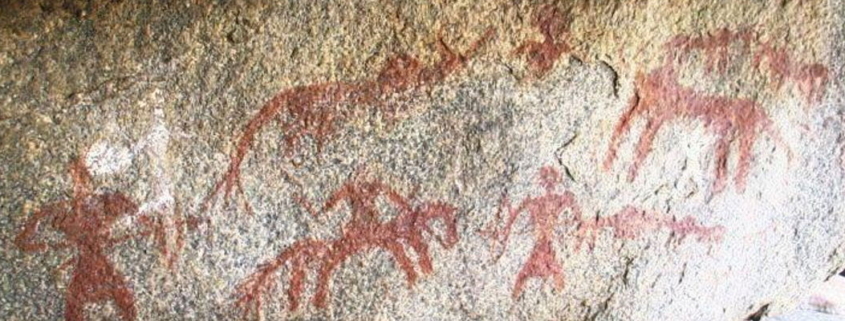Ancient History
Tungabhadra Valley with its ancient rock formations has evidence of human inhabitation dating back to the Palaeolithic Era which is distinguished by a technology in which stone blades were produced. The painting or pecking of abstract, human and animal figures on the walls of natural shelters and on exposed surfaces began in the Palaeolithic Era at an unknown time, and are abundantly found in the Tungabhadra Basin.
This region is rich with many captivating Neolithic paintings and prehistoric evidences in this region. These are single line paintings using mineral colours. Paintings of humans engaged in activities as well as animals such as birds, deer, dogs, cattle, fish, snakes etc. are common subjects.
Large ash mound features of burned and vitrified cattle dung were seen as particularly notable “socio-symbolic ritual practices”. The beginning of the Early Historic period has been defined by the appearance in Southern India of Minor Rock Edicts of the Mauryan Emperor, Ashoka (rp. 268-231 BCE). The establishment of Buddhist and Jain cults and institutions in Southern India is indicated by inscriptions and architecture.
While the ruins of Vijayanagara Empire stand dramatically in the valley of Tungabhadra, the flow of this river towards the north & east, makes the land sacred.



